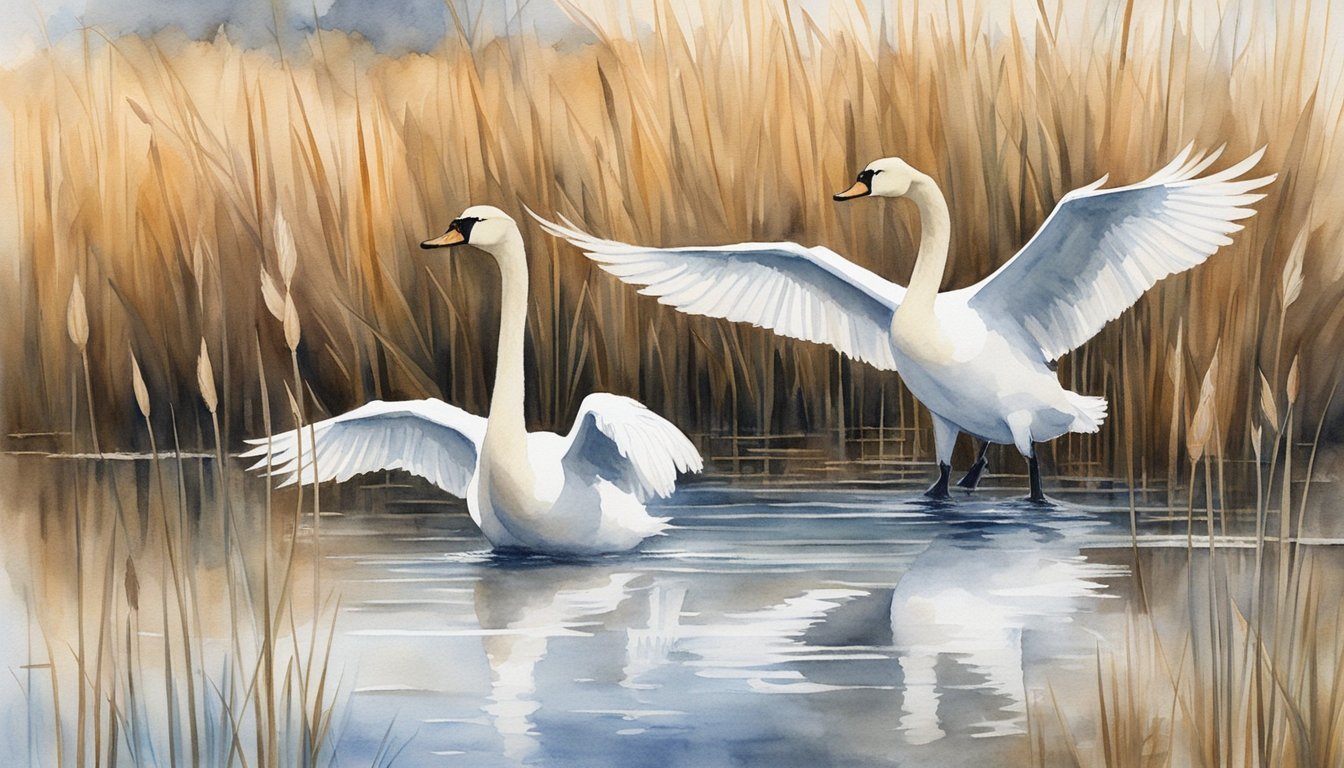Understanding Tundra Swans
Tundra swans, also known as Cygnus columbianus, are a captivating species with unique features and a remarkable migratory pattern that spans continents.
They are distinguished by their physical traits and the specific habitats they frequent.
Physical Characteristics
Tundra swans are sometimes called whistling swans due to a distinctive sound made by their wings.
They are large birds, but slightly smaller than their relative, the Trumpeter swan.
The typical body size of an adult tundra swan ranges from 48 to 55 inches in length, with a wingspan of approximately 66 inches and weighing between 8 and 23 pounds.
Their plumage is predominantly white with a black bill, usually marked by a small yellow spot at the base, near the eye.
This yellow spot sometimes appears golden in color and is a point of distinction from the similar-looking Trumpeter swan, which lacks this marking.
Habitat and Distribution
Tundra swans are highly adapted to life in the Arctic tundra, where they breed on lakes and in wetlands during the short Arctic summer.
Their extensive migration routes take them to different parts of North America for the winter, with major wintering sites located along the Atlantic Coast, from Maryland to North Carolina, and in the Pacific Northwest.
These birds prefer habitats with an abundance of water, which is essential for resting and foraging.
They feed primarily on aquatic plants such as pondweed.
The western population of tundra swans, which breeds in coastal Alaska and migrates down the Pacific Coast to wintering sites in California and other states, favors similar wetland habitats and shares a breeding range that extends across Canada and reaches into parts of Asia and Europe.
Behaviors and Ecology

The Tundra Swan is a species displaying remarkable behaviors and adaptations to its environment, ranging from intricate foraging techniques to elaborate mating rituals.
Their life cycle is tuned to the rhythm of seasonal changes, and they face various challenges that conservation efforts aim to address.
Diet and Foraging
Tundra Swans have a diet mainly comprising aquatic vegetation such as pondweeds, along with significant amounts of roots, tubers, and grasses.
During migration, they often forage in agricultural fields, consuming waste grains like corn and soybeans.
Their feeding behavior is adapted to both land and water ecosystems, and they are capable of locating food sources even in challenging environments.
Reproduction and Lifecycle
These birds are monogamous and often mate for life.
They form solitary pairs during the breeding season, building their nests on the ground in open tundra areas, often on small islands in the midst of water bodies.
Females lay 3-5 eggs, and both parents help in incubating them.
Once hatched, the young, or cygnets, stay with their family, learning from their parents until they are ready to fly.
Challenges and Conservation
Tundra Swans face various threats including lead poisoning from ingestion of shotgun pellets while foraging in the wetlands.
Additionally, habitat loss due to human activity, along with the indirect effects of climate change on their breeding and wintering grounds, poses a risk to their populations.
Conservation efforts are focused on protecting their migratory paths and ensuring safe foraging grounds free of potential contaminants. ADW: Cygnus columbianus: INFORMATION and Reproductive ecology of tundra swans on the Arctic National Wildlife Refuge, Alaska provide insights into their behavior and the importance of their ecological preservation.

